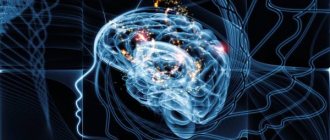Both adults and children are characterized by logoneurosis, which complicates their contacts with society. People who stutter withdraw into their own world because they are not understood. This negatively affects development, career and personal achievements, and clinical manifestations may be accompanied by an imbalance in psychological balance.
Stuttering is a tempo-rhythmic speech disorder that occurs in childhood. Without treatment, the condition can persist for many years. Such patients are also characterized by changes in posture, facial expressions and coordination of movements. For treatment to be successful, it is necessary to distinguish between the types and varieties of pathology. Other speech therapy pathologies contribute to the development of stuttering, for example, phonetic-phonemic underdevelopment of speech.
Stuttering is characterized by a wave-like course; speech defects more often appear in stressful situations. Its inconstancy aggravates the patient’s negative emotions.
World statistics show that stutterers account for 1% of the adult population and 2-3% of children.
Due to the occurrence *
- Psychogenic (neurotic) stuttering - occurs as a result of severe stress, fear, or any other psychological trauma. Common in the vast majority of cases.
- Organic (neurosis-like) stuttering - occurs as a result of damage to the tissue of the nervous system and is a consequence of various types of encephalopathies.
- Hereditary stuttering is inherited and is associated with mutations in the GNPTAB, GNPTG and NAGPA genes. Hereditary stuttering is also classified as neurosis-like.
* Note that the division of stuttering into neurotic and neurosis-like is outdated, since the differential diagnosis of these two types of stuttering returns to identifying the causes of its occurrence. This division is biased, since, in turn, the symptoms of stuttering in most cases cannot accurately determine the cause of its occurrence.
Comparative characteristics of various forms of stuttering
| Indicators | Neurotic | Neurosis-like | Mixed |
| Speech activity | Sharply reduced | Usually elevated | Increased until neurotic layers appear, then decreases |
| Localization of seizures | Respiratory-vocal sounds predominate | Predominant in the articulatory apparatus | In all muscle groups associated with speech |
| Speech rate | Different | Tahilalia | Tahilalia |
| Sound pronunciation | Without features | Often dyslalia, less often dysarthria | Various |
| Expressiveness of speech | Various | Speech is inexpressive, monotonous, muffled | Speech is inexpressive, monotonous, muffled |
| Psychomotor skills (including logomotor skills) | No obvious features | Clumsiness, poor handwriting, sluggish facial expressions, stiffness and monotony of movements | Various |
| Nose flaring during speech | Typically | Not always | Not always |
| Related movements | Frequent. Their character is changeable | Very frequent. Stereotypical | Constant and most often monotonous |
| Fixation on difficult sounds | Expressed | Weaker than with neurotic stuttering | More or less pronounced |
| Course of stuttering | Wave-like, the severity of stuttering depends on the severity of traumatic experiences | More or less constant, with periods of deterioration depending on the degree of fatigue, speech load, and somatic condition | Depends on the psychophysiological state, therefore wavy |
| Dyslexia, dysgraphia, dyscalculia | Rare | Frequently | Frequently |
| Purposefulness in overcoming speech disorders | Usually high, sometimes excessive | Sharply reduced | Insufficient |
| Psychotraumatic situation | Severely impairs speech | Usually has little effect | Impairs speech |
| Logophobia | Characteristic | Not typical | Joins later as neurotic layers develop |
| Increased fixation on speech | Typical | No | Occurs frequently |
| Psychomotor development | Various, sometimes accelerated | Delayed | Delayed |
| Development of self-care skills | No noticeable deviations | Delayed | Delayed |
| Left-handedness | As in the population | Often | Often |
| Speech pathology in close relatives | Rare | Often | Often |
| Timing and circumstances of the onset of stuttering | After mental trauma at any age, but usually at 3-7 years of age | During the development of speech | Neurosis-like stuttering during the period of speech formation, and neurotic layers much later (usually at 12-15 years of age) |
| Personality accentuations | Characteristic | Not typical | May occur |
| Intelligence | Doesn't suffer | May be reduced | May be reduced |
| Increased fixation on speech | Typical | No | Occurs frequently |
By type of speech spasms
The main symptom of stuttering is speech convulsions, which, in addition to the muscles of the speech apparatus, can also affect the respiratory muscles. Seizures can be clonic, tonic and mixed (they are also called tonic-clonic), according to this classification they are distinguished:
- Tonic type of stuttering is characterized by prolonged tension of the speech muscles during a conversation or when trying to start pronunciation. In this case, the speech apparatus of a stutterer seems to be constrained, and the tension usually affects several muscle groups, including often the respiratory ones. This usually results in a long pause or intense vocalization of a particular sound. The face, and sometimes the neck, can be very tense, which is noticeable from the outside. A person seems to freeze during a conversation, and due to prolonged contraction of the respiratory muscles, there may not be enough air. Such spasms can last several tens of seconds.
- Clonic type of stuttering is characterized by involuntary repeated rhythmic contractions of the muscles of the speech apparatus, while a person repeats individual sounds, syllables, and sometimes individual words. In this case, the repetition frequency can be high or low. It is worth noting that this also usually occurs before “complex” sounds, at which a person usually experiences tonic stuttering - since in most cases stuttering is mixed.
- Tonic-clonic (mixed) type of stuttering - observed in most people who stutter, combines the phenomena of clonic and tonic types. Over time, the same person may experience one or another type of speech seizures more often.
By localization of speech spasms
When stuttering, different groups of muscles of the speech apparatus that are directly involved in the formation of speech can undergo involuntary contraction: vocal, respiratory and articulatory.
- Voice stuttering:
- Trembling laryngeal spasm - with such stuttering, during a conversation, the vocal folds involuntarily close and open, which leads to an intermittent, trembling sound with a complete lack of articulation. In this case, the mouth is usually open, and rhythmic movements of the lower jaw, tongue, or the entire head are often observed.
- Vocal closure spasm - the vocal folds close when trying to start a conversation or in the process of pronunciation, as a result of which the voice suddenly disappears, which impedes the movement of air. The muscles of the entire torso of a person become numb, the face is usually motionless or tense. The person who stutters does not move, he does not have enough air. This type of stuttering is characterized by a sensation of a lump or obstruction in the larynx.
- A vocal spasm occurs on vowel sounds during speech and is perceived as an unusual duration of pronunciation of a vowel sound. Often the duration of this is so long that the person does not have enough air to finish the pronunciation. In other words, the person who stutters takes too long on the vowel sound. Often this causes the neck muscles to spasm, and the voice takes on an unnatural, “false” character. Articulation may be completely absent.
- Respiratory stuttering:
- Inspiratory convulsions occur during inspiration, that is, they are characterized by an involuntary sharp tension during inspiration during pronunciation. Moreover, with clonic stuttering, they can follow one after another with different frequencies. From the outside, such speech spasms are most often unnoticeable, but they always lead to an unreasonable pause during a conversation.
- Expiratory spasms of the vocal apparatus occur during exhalation and are more noticeable than inspiratory spasms. When talking, a person involuntarily makes a tense, prolonged exhalation, which is accompanied by a strong contraction of the abdominal muscles. In this case, a spasm of all groups of speech muscles is usually observed, the face may be distorted to varying degrees, and the person lacks air. Expiratory convulsions are usually observed with tonic stuttering. From the outside, the person seems to be trying with great difficulty to squeeze out a sound or word. The duration, as well as the degree of severity, may vary from case to case and change over time.
- Articulatory stuttering:
- Facial spasms - with such stuttering, the muscles of the upper or lower lip undergo convulsive contraction, the corner of the mouth is pulled to the side or down, and the mouth opens convulsively. In severe cases, this can also include cramps of the neck, frontal and ear muscles.
- Lingual cramps. In this case, most often the tip of the tongue involuntarily rests between the teeth and the palate, but there can be many options, including the most severe ones - a sublingual spasm, when the mouth involuntarily opens due to tension of the muscles under the tongue, as well as an expelling spasm of the tongue. The latter type is characterized by involuntary pushing of the tongue out of the oral cavity, and can be either tonic - the tongue is stuck out in a tense state, or clonic - when the tongue either moves forward or retracts back.
- Nasal stuttering is associated with spasms of the soft palate. As a result of these convulsions, the passage into the nasal cavity from the pharynx opens and closes, so the person who stutters speaks either through the mouth or through the nose. This causes quite unpleasant sensations in the nasopharynx.
As a result of research, it was discovered that at the moment of stuttering, a separate speech muscle, which undergoes convulsive contraction, simultaneously receives both an inhibitory and an excitatory nerve impulse. Read more about this in the neurophysiology of stuttering.
Now, based on the severity and frequency of manifestation of the above speech spasms, it is customary to distinguish between severe, moderate and mild degrees of stuttering.
The nature of speech defects
Stuttering is a speech pathology manifested by difficult and unclear pronunciation of letters and repeated repetition of the same phrases. To make this diagnosis, doctors conduct a comprehensive examination of the patient, taking into account not only existing speech defects, but also the development of the nervous system and mental disorders. The disease is treated simultaneously by several specialists (psychotherapist, speech therapist and neurologist).
The disease makes itself felt in childhood, when the foundations of correct speech are laid and the nervous system is formed. Young men are in the risk category. Doctors have found that stuttering occurs 4 times more often among boys than among girls.
In adults, this may be a speech pathology untreated in childhood, or a psychoneurotic disease acquired in adulthood, leading to the fact that a person has difficulty pronouncing phrases, drawing out words repeatedly, stumbling on vowels or consonants. Problems in the functioning of the speech apparatus interfere with normal communication, which causes strong feelings. A person who stutters is faced with the fact that he has to put in much more effort to finish school, find a job, arrange a personal life and make friends.
Possible reasons
The types of stuttering directly depend on the factors that provoked the development of the disease. For treatment to be successful, it is necessary to establish the causes underlying the pathology. According to the medical classification, it can be caused by organic or neurotic disorders.
If a person begins to stutter due to a disorder in the functioning of the brain, the cause of the development of the disease is organic damage to the body:
- Head injuries leading to the development of pathology of brain activity. This could be a concussion, concussion, bruises that provoke malfunctions of the vocal apparatus.
- Diseases that result in impaired blood supply to the brain. Failures in the functioning of neurons cause stroke, heart attack, and hypertensive crisis. In a person who has suffered a stroke, mental activity deteriorates, muscle tone decreases, and motor skills weaken. Pathological neoplasms can also lead to similar problems with speech. Some brain tumors destroy a person's articulation and vocal abilities.
Convulsive stuttering in speech can cause psycho-emotional problems.
Some people stutter due to neurological disorders that appear due to severe stress, emotional stress, and the development of phobias. Stuttering caused by mental trauma occurs due to the fact that a person cannot independently cope with negative experiences. Family and professional conflicts, a fast pace of life, and unsuccessful personal relationships provoke a stressful situation in which a person is forced to exist every day, which negatively affects his speech abilities.
Vocal spasms can result from psychological trauma. Having experienced the death of relatives, an accident, sexual violence, a person is faced with the fact that he has problems expressing and pronouncing his thoughts. His speech loses its smoothness and melody and becomes intermittent. To pronounce one phrase, you have to spend a lot of time and effort.
Depending on the reasons that provoked the disease, the characteristics of the course and types of deviation are distinguished, therefore, during the consultation, the attending physician pays special attention to this issue
By severity
- Mild stuttering is when speech spasms are sometimes observed in spontaneous speech.
- Average degree of stuttering - speech spasms occur during dialogue and monologue, but a person can speak for a certain time without stuttering.
- Severe stuttering - speech convulsions occur in any situation, including when the stutterer is alone with himself.
Most experts rightly note the inadequacy of dividing stuttering depending on the degree of severity, since depending on the time or situation in the same person, stuttering can either be completely absent or take on the most severe forms. The division of stuttering into mild, moderate and severe degrees is conditional and formal.
We believe that the severity of stuttering is determined by the degree of fixation of the stutterer on his defect. This means that if a person generally stutters rarely and almost imperceptibly, but he has strong logophobia, that is, the fear of stuttering again, then the condition of such a person can already be classified as severe due to a noticeable violation of social adaptation.
Signs of logoneurosis
Doctors believe that repeating a sound more than twice is an early sign of stuttering. For example, a child may not repeat the words: “Give, give, give me water,” but only utter the sounds: “G-g-give me water.”
Manifestations of pathology can be very different - from very characteristic to subtle. So, a child can repeat just sounds, or maybe whole words. In addition, a sudden stop in speech occurs; often parasitic sounds begin to appear in the baby’s speech: “Uh-uh...”, “Mmm-mm...”. In this way he tries to cope with his stuttering within himself.
Some children begin to stutter in stressful situations, during periods of excitement, or during a dialogue with a stranger. Otherwise they talk normally.
Logophobia, speech tricks, autonomic reactions
- Autonomic reactions during stuttering include paleness or redness of the face, increased heart rate, increased sweating. All this indicates strong emotional stress, which in turn further intensifies stuttering.
- Speech tricks (embolophrasia) - the use of meaningless or completely artificial phrases, words, syllables or sounds before “complex” sounds. Speech tricks, that is, emboli, can be repeated many times before words or sounds that a person usually stutters on. Emboli are also often used after stuttering as an introduction to smooth speech. There are a lot of examples (this is the most, well, what’s his name, uh, yes, ah,), and in some cases the stutterer uses non-existent prefixes for each word.
- Logophobia – fear of speech, speech situations, shame at the same time, anticipation of stuttering, modeling of stuttering before speaking. Logophobia is perhaps the most severe consequence of stuttering; it plays a role in reinforcing the asynchronous functioning of speech centers. Stuttering without logophobia is quite rare, and its degree sometimes reaches the point that a person refuses to speak at all.
According to the degree of logophobia
Classification of the severity and characteristics of logophobia, which largely determines the nature of stuttering:
- Logophobia of a mild degree - there is practically no fear of speech in ordinary situations and comfortable conditions, but when talking in public or with certain people it manifests itself in the form of noticeable but surmountable uncertainty. It is most often observed with mild stuttering, which in some cases can be hidden.
- Moderate logophobia manifests itself in the form of significant uncertainty in communication and fear of speech, which can decrease in comfortable conditions.
- Severe logophobia - fear of speech and uncertainty in communication in most situations determine the nature of your behavior and life in general. It is characterized by a pronounced avoidant form of behavior and a persistent, progressive violation of social adaptation.
The severity of logophobia almost always changes over time; changes in its degree can be associated with any events, with stressful or pleasant situations, with age, with the influence of psychotherapy, etc.
Symptoms and behavior
The neurotic form of stuttering is characterized by an uneven distribution of the severity of speech disorders. In different situations, a child can cope well with the speech load without showing any impairments, but otherwise speech is difficult to such an extent that the communicative process becomes almost impossible. As a rule, in a familiar and familiar environment, surrounded by close people, logoneurosis may not manifest itself or be slightly expressed. An increase in the intensity of stuttering occurs against a background of excitement and emotional overstrain, with awareness of one’s own responsibility and the significance of the event. Also, patients with neurotic stuttering may find it quite difficult to communicate with strangers or speak in front of an audience.
The behavioral characteristics of a person who stutters are also affected. The patient tries to avoid pronouncing complex multi-compound words and resorts to various speech techniques to veil the existing defect, for example, by stretching out sounds. In most cases, logophobia develops against the background of logoneurosis. It can be difficult for a person who stutters to speak with others, especially strangers, and a communication complex develops. Often a person refuses to speak at conferences and planning meetings because he is embarrassed by his speech impediment.
Young children suffering from logoneurosis avoid participating in morning performances in kindergarten, and schoolchildren refuse to respond orally in class. The pathology becomes most pronounced in adolescence, which leads to poor academic performance and maladjustment of the child.
The neurotic form and neurosis-like form of stuttering can manifest itself in various variations. Against the background of acute mental trauma, a neurotic reaction may develop, occurring after recovery from a state of shock or affect. Factors such as an unfavorable family environment or chronic mental trauma can lead to the development of pre-neurotic type changes, when speech hesitations appear sporadically. In the future, the situation can move in two directions - both towards reducing the defect, and towards its consolidation and progression up to speech automatism.
According to the nature of the flow
- The wave-like type of stuttering is observed in the vast majority of cases. Stuttering sometimes gets worse and sometimes gets better, and you can often trace the dependence of these fluctuations on the time of year, lunar cycles (many write that speech improves with the waxing moon), and time of day. Improvements or deteriorations also often occur due to natural causes that are difficult to identify.
- Stationary type of stuttering - stuttering practically does not change over time, this refers more to a mild degree.
- The regradient type of flow is the rarest and most favorable. With it, all the symptoms of stuttering disappear over time. It is more common among children, and also often occurs after concussion injuries or brain contusions in adults.
- The progradient type of stuttering is a long-term tendency for speech deterioration. It is most common in children and adolescents. Analysis of information from many subscribers of our group indicates that stuttering often worsens until the age of 18-20, and then levels out to a wave-like or stationary type of course.
- Recurrent type of stuttering - there is an alternation of periods of stuttering and normal speech.
When compiling this article, the following information was used:
- Research by L.I. Belyakova, E.A. Dyakova, M.V. Sekacheva.
Stuttering therapy
If hesitations are not convulsive in nature, when favorable conditions are created, the child communicates almost freely with peers. The percentage of such children reaches 80% at the age of 2-4 years. The prognosis is favorable in the absence of complications.
On the contrary, when a child becomes fixated on a problem, it not only aggravates the course of the disease, but also provokes new attacks. Obsessive fears appear: logophobia, sound phobia. Such children are outwardly shy, timid, and are characterized by increased anxiety. The complex nature of the disease requires an integrated approach to treatment.
Therapy should consist of speech therapy exercises, taking medications, training articulatory movements, and working with a psychotherapist. Differentiation is carried out after analyzing the structure of the speech defect and the etiology of its occurrence. The combination of pedagogical and clinical methods of therapy normalizes all components of speech, the functioning of the articulatory apparatus, and mental processes in the body. Thus, treatment is carried out by speech therapists, psychologists, neurologists, physiotherapists and social educators.
The neurotic form of stuttering is treated with medications, stress therapy, hypnosis, and autogenic training. At the same time, classes are held with a speech therapist. A neurosis-like type of pathology requires a specially selected set of measures aimed at recovery from organic brain damage. The patient needs memory training and attention. Therapy should be aimed at developing new reflexes and bringing them to automaticity. Practicing tempo and rhythm is of great importance for correcting speech. To make speech consistent, speech therapy uses the following exercises:
- thoughtful pronunciation of words;
- pronunciation of phrases to musical accompaniment;
- synchronization of speech with the movements of the fingers of the leading hand.
Positive dynamics are noted when conducting classes with music and reading poems. The set of pedagogical classes is also selected taking into account the age of the patient. Thus, children attending kindergartens are taught in a playful way. The tasks are designed in such a way as to develop the child’s personality.
Some teachers take a different approach. The correction consists of setting up a plot with a non-existent interlocutor; everyday situations and role-playing games can be created. Anything that stimulates speech activity is used. The “scene test” by G. Staabs has a similar effect, in which the essence of the conflict is revealed with the help of puppets. It also relieves mental tension. To enhance the effect, the author suggests adding autogenic training classes.
The influence of group psychotherapy in adults was studied separately (through dialogue, correction of facial expressions and gestures, classes in projective drawing, sociometry, etc.). K. M. Dubrovsky (1966) used imperative suggestion, the purpose of which was to develop positive emotions in return for approved psychological attitudes. Yu. B. Nekrasova (1984) believed that the patient is fixated on suffering, from which it is impossible to get rid of quickly. And stress psychotherapy sessions cause activity in patients, a willingness to step over the barrier. V. M. Shklovsky (1994) showed how suggestion can eliminate the fear of speech in people who stutter in an extreme situation.
According to many teachers, the basis of positive correction is slowing down pronunciation. This not only reduces muscle spasms and cramps, but also normalizes breathing, the voice becomes clearer, and articulatory movements are more coordinated. It is also necessary to work on intonation; speech should be expressive and emotional. This is achieved gradually, working on the tempo and modulation of the voice. Monotony is useful at the initial stage of therapy, but is unacceptable when consolidating new skills.
Stuttering in adults according to the method of G. Apdrews, R. Howie (1981) should be treated as follows: first, the speech rate is 50 syllables per minute, this is the optimal rate for this pathology. Then it is increased to normal levels. According to L.Z. Andronova (1993), it is necessary to begin correction by determining the speed of speech, which is different for each person. She talked about the fact that a person who stutters should not be forced to slow down his speech rate. First, it must be divided into syllables and accompanied by movements of the fingers.
Medical studies have confirmed that when speech is suppressed by noise, its characteristics change and it becomes slower. The leading place in the treatment of the disease is occupied by the biofeedback (BFB) method. Its action is based on the principle of self-regulation of the body. The speech signal is converted into a visual image, which allows the correct functional connections to be established.
For treatment to be effective, it must meet many requirements:
- be started when the first symptoms appear;
- carried out until the results are consolidated;
- be comprehensive;
- the scheme is determined taking into account the age and psychotype of the person;
- correspond to the type of defect, the severity of the violations.
The central nervous system in children quickly returns to normal with timely correction, therefore, subject to the correct selection of therapy, the prognosis is favorable. The correct tactics involve the integrated use of medical, pedagogical and psychological methods.









